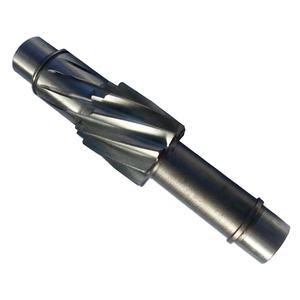PRODUCT PARAMETERS
Description
Overview of Helical Tooth Profile Face and Crown Gear
Gears are mechanical elements that are typically used to transmit rotational motion and force. They work by meshing teeth with each other to change speed, direction of torque, or to transfer power between multiple shafts. Gears are an integral part of mechanical engineering and are widely used in a variety of mechanical devices.
Advantages and features of Helical Tooth Profile Face and Crown Gear
Efficient transmission: Gears are capable of directly converting power with high efficiency and low energy loss.
Precise ratios: the desired ratio of speed and torque can be obtained by selecting gears of different sizes.
Compact: Helical Tooth Profile Face and Crown Gearsystems take up less space than other forms of power transmission.
High durability: well-designed gears can operate stably for long periods of time in harsh environments.
Low noise and vibration: Modern Helical Tooth Profile Face and Crown Gearmanufacturing technology ensures smooth operation and reduces noise and vibration.
Various types: Spur, helical, and bevel gears are available depending on the application scenario.

(Helical Tooth Profile Face and Crown Gear)
Specifications of Helical Tooth Profile Face and Crown Gear
Helical tooth profile face gears and crown gears are precision components designed for efficient power transmission in complex mechanical systems. These gears feature angled teeth cut along a helical path. The helix angle typically ranges between 10 to 30 degrees. This design reduces noise during operation. It also improves load distribution across gear teeth. The result is higher durability under heavy stress. Helical face gears mesh with parallel or intersecting shafts. Crown gears adapt to perpendicular shaft arrangements. Both gear types support high torque applications.
Materials used include hardened steel alloys for strength. Stainless steel or brass options are available for corrosion resistance. Heat treatment processes like carburizing or induction hardening enhance surface hardness. This increases wear resistance. Tooth profiles are machined using CNC grinding or hobbing. Precision ensures smooth engagement between mating gears. Tolerances adhere to AGMA or ISO standards. Backlash control is critical. Minimal clearance prevents power loss. It also reduces vibration.
The tooth contact pattern is optimized during manufacturing. This ensures even pressure distribution. Surface finishes range between Ra 0.8 to 1.6 micrometers. Smoother surfaces lower friction. They also improve efficiency. Load capacity depends on module size and face width. Larger modules handle higher forces. Face widths vary between 20 to 150 millimeters. Custom dimensions are possible for specialized setups.
Helical crown gears include a concave tooth profile. This allows engagement with bevel gears at right angles. The curvature matches the mating gear’s pitch cone. Correct alignment prevents premature wear. Lubrication channels are often integrated into the gear design. This ensures consistent oil flow to contact surfaces. Sealed housings protect against debris.
Applications include automotive differentials, industrial machinery, and robotics. These gears suit high-speed operations. They perform reliably in repetitive motion systems. Mounting requires precise shaft alignment. Installation errors cause uneven tooth loading. Technical specifications cover pitch diameter, number of teeth, and pressure angle. Standard pressure angles are 20 or 25 degrees. Higher angles boost load capacity. Lower angles reduce radial forces.
Customization options include bore sizes, keyways, and set screws. Anti-corrosion coatings extend service life in harsh environments. Testing involves load cycling and thermal analysis. Compliance with industry standards ensures compatibility with existing systems. Performance data includes torque ratings, efficiency percentages, and fatigue limits. Maintenance guidelines recommend regular lubrication and alignment checks.

(Helical Tooth Profile Face and Crown Gear)
Applications of Helical Tooth Profile Face and Crown Gear
Helical tooth profile face gears and crown gears are key components in many mechanical systems. These gears transfer motion and power between intersecting or perpendicular shafts. The angled teeth of helical gears create smooth engagement. This reduces noise and vibration compared to straight-cut gears. They handle higher loads and last longer in demanding conditions.
In automotive systems, helical tooth face gears work in steering mechanisms and transmissions. Their design allows compact layouts. This saves space in tight engine compartments. The smooth operation improves driver comfort by minimizing jerky movements. Crown gears pair with pinions in differential systems. They help wheels rotate at different speeds during turns. This prevents tire wear and boosts vehicle stability.
Industrial machinery uses these gears for heavy-duty tasks. Conveyor belts, lifts, and cranes rely on their high torque capacity. The helical teeth spread force evenly across the gear surface. This reduces stress on individual teeth. It avoids sudden failures in critical equipment. Factories benefit from less downtime and maintenance costs.
Robotics and automation systems integrate helical and crown gears for precise motion control. The gradual tooth contact ensures accurate positioning. This is vital for robotic arms in assembly lines or medical devices. The gears handle rapid direction changes without losing alignment. This supports repeatable tasks in manufacturing or delicate surgeries.
Aerospace applications demand lightweight yet durable gear solutions. Helical tooth profiles in aircraft engines and landing gear systems withstand extreme temperatures and pressures. Their efficiency in power transfer contributes to fuel savings. Crown gears assist in adjusting wing flaps or rotor angles. Reliability here is non-negotiable for safety.
Renewable energy systems like wind turbines use these gears in yaw and pitch control mechanisms. The gears adjust blade angles to optimize energy capture. Their durability ensures performance in harsh weather. Smooth rotation prevents mechanical strain. This extends the lifespan of turbine components.
These gears also appear in marine propulsion systems. They manage power distribution between engines and propellers. Corrosion-resistant materials make them suitable for saltwater environments. The helical design reduces vibration. This protects onboard electronics and improves passenger comfort.
Medical equipment such as MRI machines and surgical robots use these gears for quiet operation. Precision is critical here. The gears ensure accurate imaging or tool movement. Their low maintenance needs align with hygiene standards in healthcare settings.
The versatility of helical tooth profile face gears and crown gears makes them essential across industries. Their design improvements continue to push the limits of mechanical efficiency and reliability.
Campony Introduction
Established in 2002, Shift Gear Machinery Co.,ltd. focus on metal research and mining machinery spare parts. 2 factories over an area of 13,300 square meters, based on 100+ sets of equipment, our production capacity reaches 12000 Tons/Year. has passed ISO 9001 quality managment system certification in 2008.
Our mainly products are dragline excavator spare parts,rotary kiln spare parts, large modulus gear (gear shaft), gearbox ect. 40+ patents with over 45 years experience to help focus on improve the service life of spare parts. We belive that more than 80% reason of mechanical parts’ working life depends on hot processing (steel making/forging/casting/welding/heat treatment). Eight material engineers will control the quality from the original resource.
If you are interested, please feel free to contact us.
Payment
L/C, T/T, Western Union, Paypal, Credit Card etc.
Shipment
By sea, by air, by express, as customers request.
5 FAQs of Helical Tooth Profile Face and Crown Gear
Helical tooth profile face and crown gears are used in machinery requiring smooth power transmission. These gears have angled teeth. The design reduces noise during operation. It improves load distribution across the gear teeth. Common applications include automotive systems, industrial machinery, and heavy equipment.
What makes helical tooth gears different from spur gears? Helical gears have teeth cut at an angle. This angle creates gradual contact between teeth. Spur gears have straight teeth. They engage suddenly. Helical gears operate quieter. They handle heavy loads better. Spur gears suit low-speed applications. Helical gears work well in high-speed, high-load scenarios.
Why choose helical tooth profile face gears? The angled teeth spread forces evenly. This reduces wear on individual teeth. It extends gear lifespan. Face gears transfer motion between intersecting shafts. Crown gears adjust the angle of rotation. Both types minimize vibration. They improve efficiency in complex mechanical systems.
What industries use these gears? Automotive manufacturers rely on helical gears for transmissions. Industrial machines use them in conveyors and lifts. Aerospace systems apply helical gears for precise motion control. Heavy machinery like cranes depend on their load capacity. Robotics integrate them for smooth, accurate movements.
How to select the right material for helical gears? Steel alloys are common for high strength. They resist wear under heavy loads. Bronze suits applications needing corrosion resistance. Plastic gears reduce noise in lightweight systems. Material choice depends on load, speed, and environment.
How to maintain helical tooth gears? Regular lubrication prevents friction damage. Inspect teeth for wear or pitting. Misalignment causes uneven wear. Check mounting surfaces for accuracy. Replace gears showing cracks or deformation. Clean gears to remove debris. Proper maintenance ensures long-term performance.

(Helical Tooth Profile Face and Crown Gear)
REQUEST A QUOTE
RELATED PRODUCTS
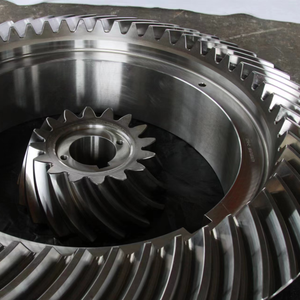
China Hot Powder Metallurgy Motor Gear Stainless Steel Gear Parts Powder Metallurgy Gear

heavy-duty single two three stage helical bevel cylindrical harden softened gear speed reducer reduction gearbox
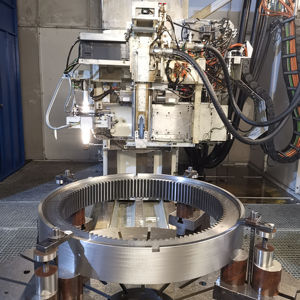
GUOMAO S39/49/59 AC Worm Gear Motor 220/380V
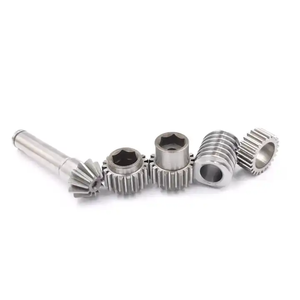
MAR series low backlash and high precision helical gear reducer 60/90/115/142/180 low clearance stepping planetary servo gearbox
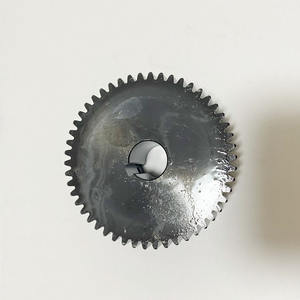
NMRV30 Aluminum Alloy Small Worm Gear Reducer Speed Gearbox with Input Shaft Product Category Speed Reducers
